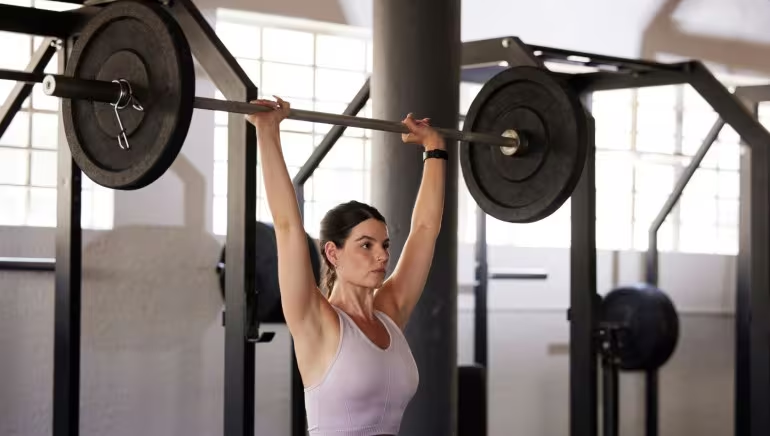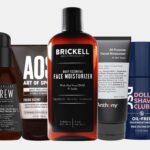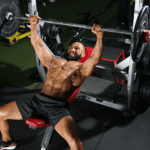The military press is a cornerstone exercise for developing strong, stable, and well-defined shoulders. Known for targeting the deltoids, trapezius, and triceps, it is a fundamental lift for building upper body strength, enhancing athletic performance, and improving posture. Whether you are a beginner starting with light dumbbells, an advanced athlete focusing on heavy barbell presses, or a home exerciser seeking bodyweight alternatives, incorporating the military press into your routine is essential for achieving comprehensive shoulder development.
This guide explores everything you need to know about the military press: anatomy, benefits, equipment-based and bodyweight variations, muscle isolation techniques, recovery, injury prevention, sample workout routines, and expert tips to maximize results.
Understanding the Military Press: Anatomy and Function
The military press, also referred to as the overhead press, primarily targets the deltoid muscles, but it also engages the trapezius, triceps, and upper chest. Understanding the anatomy and function of these muscles helps in optimizing the exercise for both strength and aesthetics.
- Anterior Deltoid: Located at the front of the shoulder, responsible for lifting the arm forward and overhead.
- Medial Deltoid: Situated on the side, contributes to arm abduction and overall shoulder width.
- Posterior Deltoid: Supports shoulder stability and assists in pulling motions.
- Trapezius: Stabilizes the scapula during pressing movements.
- Triceps: Extends the elbow to assist in pushing the weight overhead.
Functions of the Military Press:
- Overhead shoulder press for strength and size.
- Improves upper body pushing power.
- Enhances stability and balance in the shoulder joint.
- Contributes to a well-rounded, athletic physique.
Secondary Keywords: anterior deltoid exercises, medial deltoid exercises, upper chest and shoulder engagement
Benefits of Regular Military Press Training
Training with the military press offers a multitude of benefits, making it a vital exercise for any upper body routine.
Improved Shoulder Strength
The military press develops pushing power, enabling better performance in compound lifts such as bench presses, push-ups, and other overhead movements. Strong shoulders also enhance functional strength for daily activities, including lifting, carrying, and overhead reaching.
Muscle Hypertrophy and Size
Military press variations stimulate the deltoid muscles, promoting hypertrophy and increasing shoulder width. Combined with lateral raises and accessory exercises, the military press contributes to aesthetic shoulder development, creating a broader and more muscular upper body.
Athletic Performance
Athletes benefit from the military press as it builds explosive power for sports like basketball, football, swimming, and climbing. Overhead strength improves throwing, pushing, and lifting capabilities.
Posture and Stability
Strong delts and upper back muscles help maintain proper alignment and prevent rounded shoulders. This contributes to better posture, reducing strain on the neck and spine.
Secondary Keywords: military press for strength, military press for shoulders, military press for size, military press for athletes
Equipment-Based Military Press Variations
Different equipment offers unique advantages, allowing you to target muscles from various angles and accommodate your training goals.
Barbell Military Press
The barbell press is ideal for progressive overload and maximal strength development.
- Standing Barbell Press: Engage your core and legs for stability while pressing overhead.
- Seated Barbell Press: Reduces lower body involvement, focusing more on the delts.
Tips for Success:
- Maintain a neutral spine to prevent lower back strain.
- Use a grip slightly wider than shoulder-width.
- Keep elbows slightly forward to avoid shoulder impingement.
Secondary Keywords: barbell military press, standing military press, seated military press
Dumbbell Military Press
Dumbbells allow independent arm movement, promoting balanced muscle development and a greater range of motion.
- Seated Dumbbell Press: Provides stability while focusing on deltoid isolation.
- Standing Dumbbell Press: Engages the core and stabilizing muscles.
Benefits:
- Corrects muscle imbalances.
- Enhances shoulder mobility and control.
Secondary Keywords: dumbbell military press
Smith Machine Military Press
The smith machine offers assisted stability, ideal for beginners or heavy pressing without a spotter.
- Allows controlled vertical movement.
- Reduces risk of injury due to guided path.
Secondary Keywords: smith machine military press
Overhead Press Variations
These variations add diversity to your training, targeting different shoulder angles and movement patterns.
- Arnold Press: Rotational movement engages all deltoid heads.
- Push Press: Incorporates leg drive for explosive strength.
- Z-Press: Seated on the floor to isolate the shoulders and core.
Secondary Keywords: overhead press variations

Bodyweight and Functional Military Press Movements
Handstand Push-Ups
Handstand push-ups are a challenging bodyweight alternative to barbell presses.
- Develop deltoid strength and shoulder stability.
- Use wall support for beginners.
- Progress with partial reps before attempting full range.
Secondary Keywords: handstand push-ups
Push Press Alternatives
Push presses combine leg drive with overhead pressing, emphasizing power and explosiveness.
- Dumbbell push press
- Kettlebell push press
Secondary Keywords: push press alternatives
Bodyweight Shoulder Press Variations
These exercises are perfect for home workouts without equipment.
- Pike push-ups
- Elevated push-ups targeting shoulders
Secondary Keywords: overhead pressing without equipment, bodyweight shoulder press
Muscle Isolation and Focused Shoulder Training
To maximize hypertrophy and shoulder aesthetics, incorporate muscle isolation exercises:
- Lateral Raises: Target medial delts for width.
- Front Raises: Focus on anterior delts for shoulder definition.
- Face Pulls: Strengthen rear delts and traps for balanced shoulders.
Secondary Keywords: shoulder press variations for hypertrophy, anterior deltoid exercises, medial deltoid exercises
Recovery, Mobility, and Injury Prevention
Shoulder Mobility Exercises
- Band dislocates and dynamic arm circles enhance range of motion.
- Maintain flexibility to reduce injury risk.
Rotator Cuff Strengthening
- Internal and external rotations with bands or light dumbbells prevent shoulder impingement.
Stretching and Post-Workout Recovery
- Doorway stretches and overhead stretches relieve tension in the shoulders and upper back.
Secondary Keywords: stretches for shoulders and upper back, military press injury prevention tips

Military Press Workouts for Specific Goals
Strength Focus
- Heavy barbell presses, low rep ranges (3–6 reps).
- Long rest intervals (2–3 minutes).
Secondary Keywords: military press for strength, compound shoulder exercises
Size and Hypertrophy Focus
- Moderate weights, 8–12 reps per set.
- Focused tempo: slow eccentric, controlled concentric.
Secondary Keywords: military press for size, shoulder press variations for hypertrophy
Athletic Performance and Power
- Explosive push presses, kettlebell presses.
- Enhance upper body power and coordination.
Secondary Keywords: military press for athletes, military press for upper body power
Sample Military Press Workout Routines
| Level | Exercises | Sets | Reps | Notes |
|---|---|---|---|---|
| Beginner | Dumbbell Press, Pike Push-Ups, Band Overhead Press | 3 | 12–15 | Focus on controlled movement |
| Intermediate | Barbell Standing Press, Handstand Push-Ups, Arnold Press | 4 | 8–12 | Moderate weight, maintain strict form |
| Advanced | Smith Machine Press, Push Press, Dumbbell Seated Press | 5 | 6–10 | Heavy loads, progressive overload |
Internal Link: Abs Workout: Effective Exercises for a Strong Core
Frequently Asked Questions (FAQ)
Q1: How often should I train the military press?
A: 2–3 times per week, allowing adequate recovery for muscle growth and strength.
Q2: Can I perform military press at home without equipment?
A: Yes, pike push-ups, handstand push-ups, and resistance band presses are effective alternatives.
Q3: What’s the best variation for building shoulder size?
A: Barbell presses for progressive overload and dumbbell presses for balanced development.
Q4: How can I prevent shoulder injuries while pressing?
A: Warm up, use proper form, strengthen rotator cuff muscles, and gradually increase weight.
Q5: Are push press and military press interchangeable for strength?
A: Not entirely. Push press incorporates leg drive, while strict military press focuses solely on shoulder strength and stability.
Tips for Maximizing Military Press Results
- Warm-Up: Dynamic stretches and light pressing movements.
- Progressive Overload: Gradually increase weight or reps for continual adaptation.
- Recovery: Stretching, foam rolling, and proper sleep are critical.
- Nutrition: Adequate protein and calories support hypertrophy.
- Avoid Common Mistakes: Keep elbows slightly forward, avoid arching the lower back, and maintain core engagement.
Conclusion
The military press is an essential exercise for anyone seeking strong, well-defined shoulders, improved posture, and enhanced athletic performance. By incorporating barbell, dumbbell, seated, standing, and bodyweight variations, you can target all deltoid heads, engage stabilizing muscles, and maximize both strength and size.
Consult a certified trainer or fitness professional to develop a personalized military press program. Implement proper form, progressive overload, and recovery strategies to safely achieve your shoulder development goals. Begin today and take the first step toward stronger, more powerful shoulders.









